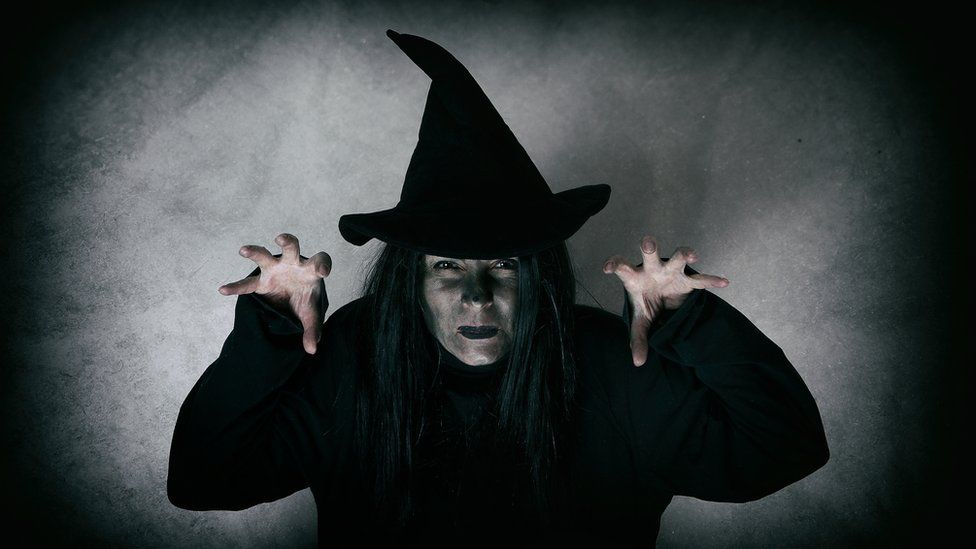The real and bloody history behind the witches of Halloween
- Published

You will have seen them as part of groups all across Scotland on Monday night, from cute to scary with a pointy hat and broomstick.
Witches are a favourite Halloween dressing-up costume as well as a subject of fascination in art and literature. But behind the fun is a very real and bloody history.
"Scotland had quite a severe witch-hunt," says Julian Goodare, reader in history at the University of Edinburgh.
"About five times the European average in executions per capita, much more severe than in England. There are other places as severe as that, but it is a notable thing that happens in Scotland."
He says witch-hunting was a European phenomenon, to do with the Reformation and counter-reformation, about building a godly state. More than 3,800 people in Scotland were accused of witchcraft. Most of them, but not all, were women.
Witch-hunting continued in waves across the 16th and 17th centuries. Some years there might be five or 10 cases a year, then the country would be gripped by a panic and there would be 200 to 300.
Dr Goodare says this is partly explained by two different ideas about what constituted witchcraft.
More people were executed at Castlehill in Edinburgh than anywhere else in Scotland
"The peasants think of witchcraft as something about bewitching your neighbour. There's only ever one witch in their mind and it's someone who bewitched them."
For others, though, there were elements of conspiracy.
"The elite model is about the devil," he continues.
"I mean people aren't actually collectively worshipping the devil, but it becomes plausible to think that they are. And you can easily have a snowball that can gather pace very rapidly, I'm afraid."
The largest single place where people were executed after being found guilty of witchcraft was Castlehill in Edinburgh. Many of those accused of witchcraft were taken to the capital for trial.
There is already a small 19th Century drinking fountain which marks an area where there were executions but some people would now like a discussion about whether there should be something bigger. In Norway, for instance, they marked their witch trials with an impressive monument.
Julian Goodare, for one, would like that discussion.
"These kind of things still happen," he continues. "Panics still happen, persecutions still happen. If there are lessons from what happened three or 400 years ago, then perhaps we can learn some of those lessons by thinking about persecution."
- Published31 October 2016